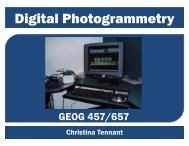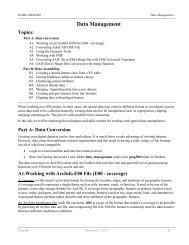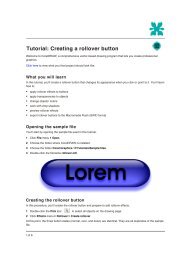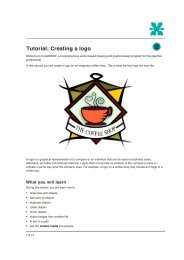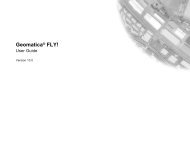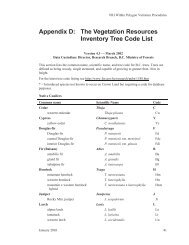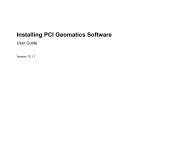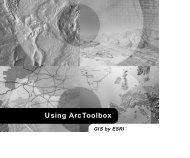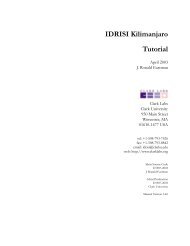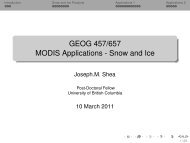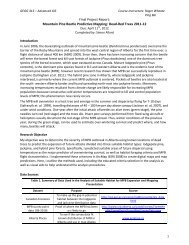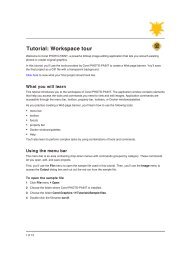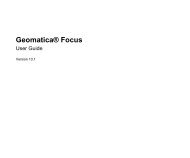Understanding Map Projections
Understanding Map Projections
Understanding Map Projections
You also want an ePaper? Increase the reach of your titles
YUMPU automatically turns print PDFs into web optimized ePapers that Google loves.
PROJECTION TYPES<br />
Because maps are flat, some of the simplest<br />
projections are made onto geometric shapes that can<br />
be flattened without stretching their surfaces. These<br />
are called developable surfaces. Some common<br />
examples are cones, cylinders, and planes. A map<br />
projection systematically projects locations from the<br />
surface of a spheroid to representative positions on a<br />
flat surface using mathematical algorithms.<br />
The first step in projecting from one surface to<br />
another is creating one or more points of contact.<br />
Each contact is called a point (or line) of tangency.<br />
As illustrated in the section about ‘Planar projections’<br />
below, a planar projection is tangential to the globe<br />
at one point. Tangential cones and cylinders touch<br />
the globe along a line. If the projection surface<br />
intersects the globe instead of merely touching its<br />
surface, the resulting projection is a secant rather<br />
than a tangent case. Whether the contact is tangent<br />
or secant, the contact points or lines are significant<br />
because they define locations of zero distortion.<br />
Lines of true scale are often referred to as standard<br />
lines. In general, distortion increases with the<br />
distance from the point of contact.<br />
Many common map projections are classified<br />
according to the projection surface used: conic,<br />
cylindrical, or planar.<br />
Projected coordinate systems • 13



